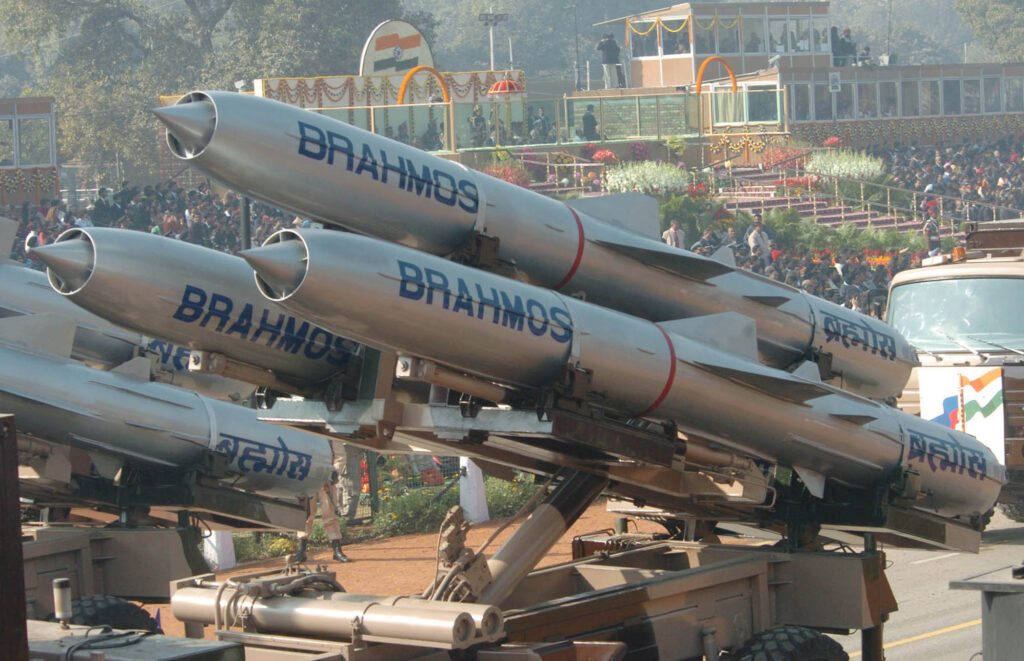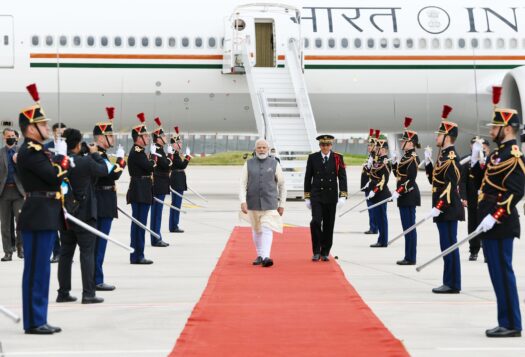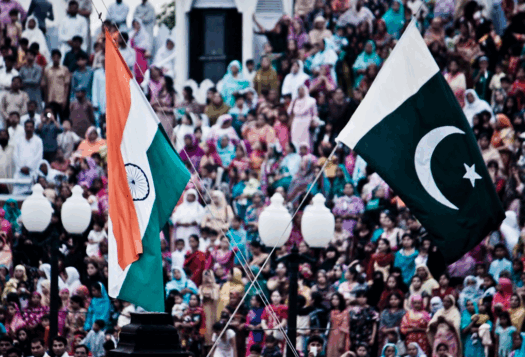
On July 30 and August 1 of this year, Vietnamese Prime Minister Pham Minh Chinh visited India in an effort to advance a unique relationship driven by shared strategic concerns over China’s growing assertiveness in the Indo-Pacific.
In recent years, India has emerged as a key defense partner for Vietnam, offering critical military equipment and training. India’s exports to Vietnam have complemented Vietnam’s ties with the United States by diversifying Hanoi’s defense supplies and expanding its strategic options. While Washington provides Hanoi advanced military technology, New Delhi offers additional options and support in areas such as naval training and missile technology, which are crucial for Vietnam’s maritime security.
However, given their relative levels of economic development, India and Vietnam also share several economic complementarities that have not yet been fully exploited. Across several sectors, including trade, defense, and climate change, India and Vietnam can do much more together, including within existing policy frameworks.
Compelling Rationale for Defense Ties
India has long been supportive of Vietnam’s sovereignty in the South China Sea. In 2011, for instance, India signed an agreement with Vietnam to expand oil exploration in the South China Sea and withstood Chinese opposition to the project. In 2016, after a tribunal constituted under the United Nations Convention on the Law of the Sea (UNCLOS) ruled against Beijing’s expansive territorial claims in the South China Sea, Indian Prime Minister Narendra Modi undertook a state visit to Vietnam and upgraded the bilateral relationship to a Comprehensive Strategic Partnership. The joint statement issued during Modi’s visit also expressed support for peace, stability, and freedom of navigation based on international law, particularly UNCLOS.
[…] Given their relative levels of economic development, India and Vietnam also share several economic complementarities that have not yet been fully exploited. Across several sectors, including trade, defense, and climate change, India and Vietnam can do much more together, including within existing policy frameworks.
That shared China threat has consequently driven India to further bolster defense ties with Vietnam. Since the signing of a formal Defense Protocol in 2000, India had already been offering military equipment and training to Vietnamese defense personnel, along with a USD $100 million concessional line of credit. In 2022, the defense ministers of the two countries issued a joint vision statement to enhance the scope and scale of that existing defense cooperation. They also signed a mutual logistics agreement, allowing the two countries to use each other’s military bases for refueling, repair, and resupply. Thereafter, in 2023, India gifted the indigenously-built naval vessel INS Kirpan to Vietnam — the first time India had ever gifted an active warship to another country. At the same time, India has also been providing various forms of assistance to the Vietnamese navy, including submarine training and critical Soviet-origin spare parts.
These initiatives were taken forward by the two countries during Prime Minister Chinh’s recent state visit. During the visit, Vietnam aimed to further expand this defense cooperation into emerging areas such as cybersecurity, information security, military medicine, and submarine search and rescue. Chinh and Modi also welcomed the signing of loan agreements to execute the line of credit offered by India for defense procurement, totaling USD $300 million.
However, despite these great strides, the two countries still face several hurdles in the defense sector. Notwithstanding the logistics agreement signed in 2022, not much progress has been made by the two navies in terms of developing interoperability for coordinated operations. Vietnam has also not completed the acquisition of BrahMos missiles from India. The BrahMos is a supersonic cruise missile that would enhance Vietnam’s defensive and offensive capabilities, particularly in maritime security. Yet, so far, Vietnam has not moved forward with this acquisition because it hopes to avoid any actions that might escalate tensions in the South China Sea.

Vietnam’s arms imports have also stalled in recent years, thereby also impacting the growth of its defense trade with India more generally. Recent data indicates that Vietnam’s arms imports currently stand at their lowest volume since 2007, partly due to a lack of large-scale weapons production capabilities, an effort to diversify away from Russia, and a recent halt in arms supplies from Israel, its second-largest arms supplier.
Economic Synergies
In addition to defense ties, Vietnam is also an important economic partner for New Delhi, especially due to its ability to connect India with Southeast Asia. For instance, Vietnam is a part of the Mekong-Ganga Cooperation (MGC) initiative along with Cambodia, Laos, Thailand, Myanmar, and India. The MGC drives cooperation among the six countries on tourism, culture, education, transport, and communications.
Several synergies make deeper economic cooperation between India and Vietnam possible. Both countries are keen to establish themselves as global supply and distribution hubs, capitalizing on efforts by Western investors to reduce reliance on China. Some analysts fear that this might cause competition between the two economies. But competition need not be inevitable. Although Vietnam’s exports surpassed India’s exports last year, the vast disparity between the two countries in terms of economic size and strength prevents direct competition. By virtue of being a larger economy, India is able to offer a broader market and a diversity of industries, thereby making it a complementary partner rather than a competitor for Vietnam.
Given these complementarities, India and Vietnam have been making efforts to expand their bilateral trade. Both India and Vietnam are members of the Association of South East Asian Nations(ASEAN)-India Free Trade Area (AIFTA), which has been in effect since 2010. The AIFTA removes tariffs on over 80 percent of goods traded between India and members of ASEAN. As Vietnam approaches the final phase of tariff reductions under AIFTA this year, Prime Minister Chinh’s recent visit to New Delhi saw the two nations set an ambitious target to increase bilateral trade to USD $20 billion.
Both countries are keen to establish themselves as global supply and distribution hubs, capitalizing on efforts by Western investors to reduce reliance on China. Some analysts fear that this might cause competition between the two economies. But competition need not be inevitable.
Yet, despite these ambitions, bilateral trade has been an underachiever, hampered by high tariffs and other barriers. Trade between India and Vietnam has largely remained flat at just over USD $14 billion since 2021-22. Vietnam has raised concerns over high Indian tariffs on various exports such as pepper and cashew nuts. The Bureau of Indian Standards has also delayed the certification of over two dozen Vietnamese companies. For India, the large trade deficit with Vietnam — totaling USD $293 million in May 2024 alone — is also a concern. Between May 2023 and May 2024, India’s exports to Vietnam dropped by USD $17 million, while imports increased by over USD $95 million. Differences over these matters have hampered progress on trade liberalization.
Pushing the Frontiers of Cooperation
While the India-Vietnam relationship has grown from strength to strength over the years, there still remains a lot of unfulfilled potential in the partnership.
Both nations would do well to employ a cooperative approach to leverage their economic complementarities. India and Vietnam could provide enhanced market access to each other’s products through a tailored Free Trade Agreement (FTA) that addresses specific trade barriers and opportunities. Joint efforts to market products such as textiles from India and electronics from Vietnam could also help increase trade volume.
India and Vietnam should also expand region-wide collaboration under existing frameworks such as India’s Indo-Pacific Oceans’ Initiative (IPOI). The IPOI is an initiative aimed at building practical cooperation with like-minded countries on seven thematic pillars, ranging from maritime security to trade and connectivity. In 2020, India formally invited Vietnam to collaborate on the IPOI. Vietnam has voiced support for the IPOI but has not yet taken action in terms of collaboration. This may be due to fears of antagonizing China. But given that the initiative does not entail any specific actions aimed against China or create any new institutional structures, such concerns are not entirely warranted. India should take steps to further clarify the institutional framework of the IPOI and work with Vietnam to clearly define each other’s roles within the initiative.
The two countries can also be crucial partners for each other in areas pertaining to climate change. Climate change, rising sea levels, and extreme weather phenomena can damage or disrupt military bases, defense systems, or other critical security-related structures, thereby weakening their effectiveness and safety. India and Vietnam should develop joint strategies to address and adapt to these risks. A welcome step was taken in this direction during Prime Minister Chinh’s recent visit to India, which saw Vietnam announce its intention to join the Coalition for Disaster Resilient Infrastructure.
The progress of this bilateral relationship is of mutual benefit to both India and Vietnam. Closer cooperation with Vietnam under the Act East Policy can significantly enhance India’s strategic depth and regional influence. For Vietnam, India can be a valuable partner in capacity building, security, and economic development in a world where Hanoi is increasingly looking to diversify its partnerships and strengthen its strategic autonomy.
Also Read: Why BIMSTEC’s Maritime Transport Agreement is Essential for India
***
Image 1: MEAphotogallery via Flickr
Image 2: Public.Resource.Org via Flickr


